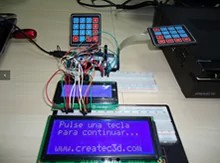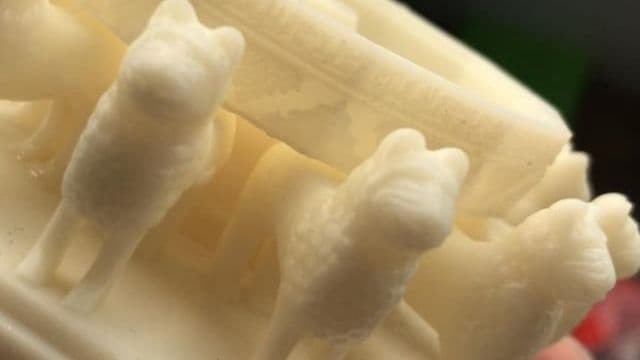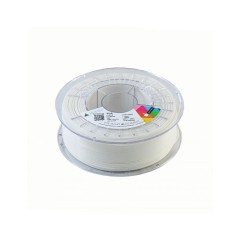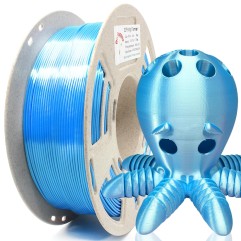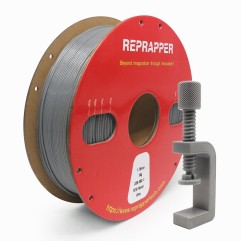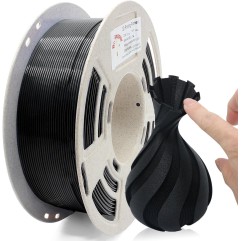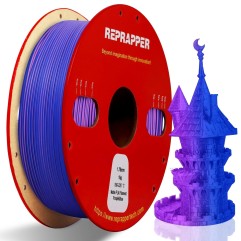- On sale!
- New
PLA + REPRAPPER | IMPRESORAS 3D
High-quality PLA filament for 3D printers. Over 10 years in the market.
Te quedan 120€ para el envío gratis

24h Delivery

FREE for orders over 120€

Secure payment
Usually joint purchase
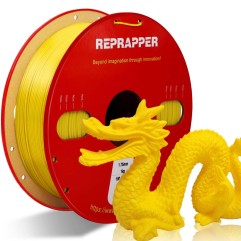
Información del producto
PLA 3D Printer Filament REPRAPPER Characteristics:
- Material Type: PLA
- Technical Name: Polylactic Acid
- Filament Diameter: 1.75mm
- Diameter Tolerance: ±0.03mm
- Color: White, black, red, gray, blue, green, orange, purple, pink, silver, yellow
- Printing Parameters:
- Printing Temperature: 190-240℃
- Printing Bed Temperature: Not required (or 60℃ if applicable)
- Manufacturer: Reprapper
- ASTM Properties:
- Physical Properties:
- Density: 1.23 g/cm³ at 23℃ (ASTM D792)
- Melt Flow Rate: 6 g/10min at 190℃, 2.16Kg (ASTM D1238)
- Mold Shrinkage: 0.4-0.6% at 23℃ (ASTM D955)
- Mechanical Properties:
- Tensile Strength: 60 MPa at 50mm/min (ASTM D638)
- Elongation: 6% at 50mm/min (ASTM D638)
- Flexural Strength: 90 MPa at 2mm/min (ASTM D790)
- Flexural Modulus: 3000 MPa at 2mm/min (ASTM D256)
- Impact Strength (IZOD): 4 KJ/m² at 4mm, 23℃
- Thermal Properties:
- Heat Distortion Temperature: 65℃ at 1.8MPa, 6.4mm (ASTM D648)
- Physical Properties:
Usage and Applications of REPRAPPER PLA Filament for 3D Printers:
PLA (Polylactic Acid) filament is one of the most popular and versatile materials for 3D printing due to its ease of use, biodegradability, and wide range of applications. Some interesting uses include:
- Rapid prototyping of parts and models.
- Creating custom toys and accessories.
- Printing decorative pieces and household items.
- Manufacturing medical and dental parts.
- Producing architectural models and educational projects.
Tips for Buying PLA Filament for 3D Printers:
Before selecting any PLA filament for your 3D printer, it is important to check the extrusion temperature supported by your hotend/extruder. Generally, almost all 3D printers on the market can print PLA filament, but it is good to make this verification. Once you have the filament at home, it is crucial that you store it in a cool, dry place to prevent moisture absorption.
To preserve PLA filament in a coastal or humid area, it is important to take additional precautions due to the high ambient humidity that can affect print quality. Here are some tips:
- Store the filament in a cool, dry place away from direct moisture.
- Use vacuum-sealed bags or airtight containers to protect the filament from moisture.
- Add desiccants, such as silica gel, inside the container to absorb moisture and keep the filament dry.
- Avoid leaving the filament exposed to air for extended periods when not in use.
- Consider using a storage cabinet or box with humidity control if possible.
Regularly clean the extruder and printer nozzle to prevent clogs. This practice is really important, in addition to avoiding the annoying jams that can cause problems, it will ensure that your creations have fewer imperfections.
Adjust the printing temperature according to the manufacturer's recommendations for the filament. Although PLA is a plastic created with the same material (polylactic acid), each manufacturer produces it differently, and depending on the color of your PLA filament (pigment for coloring it), it may require different printing temperatures (we talked about a few degrees up or down).
Use an appropriate printing surface, such as a heated bed or painter's tape, to improve adhesion. Try to keep the base as clean as possible for better results.
How to Change PLA Filament in My 3D Printer:
Before changing the filament of your 3D printer, make sure the extruder is hot at the current filament's printing temperature. This will facilitate extraction and prevent clogs.
Heating the Extruder:
Make sure the extruder is at the correct temperature for the filament you want to remove. You can do this from the 3D printer's control panel or printing software. The specific temperature will depend on the filament type; for PLA filament, the extrusion temperature ranges between 190 and 240 degrees Celsius.
Removing the Old Filament:
- Set the extruder to the current material temperature.
- 3D printers have a mechanism to ensure the passage of PLA filament to the tip. Release the lever or filament retention system on the
You might also like
Más productos de Reprapper
Lo has podido ver en
